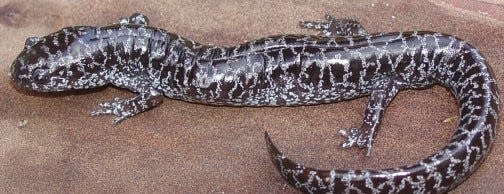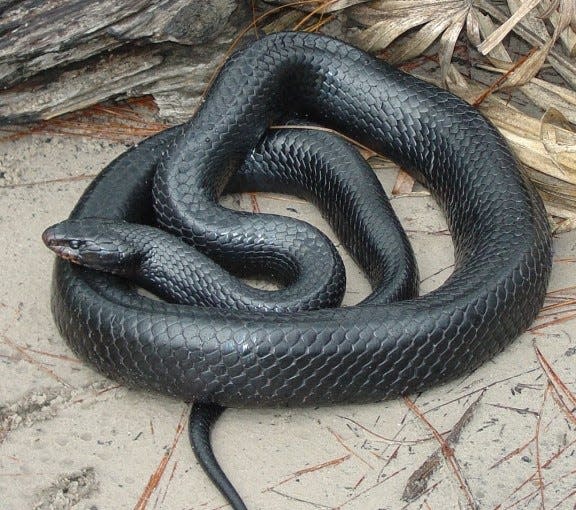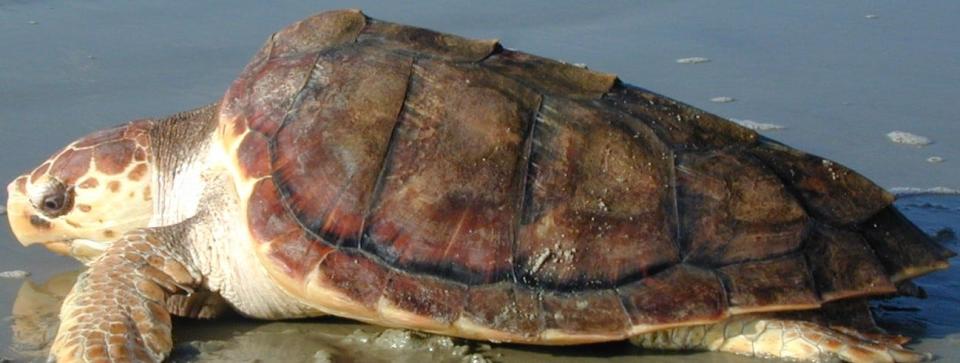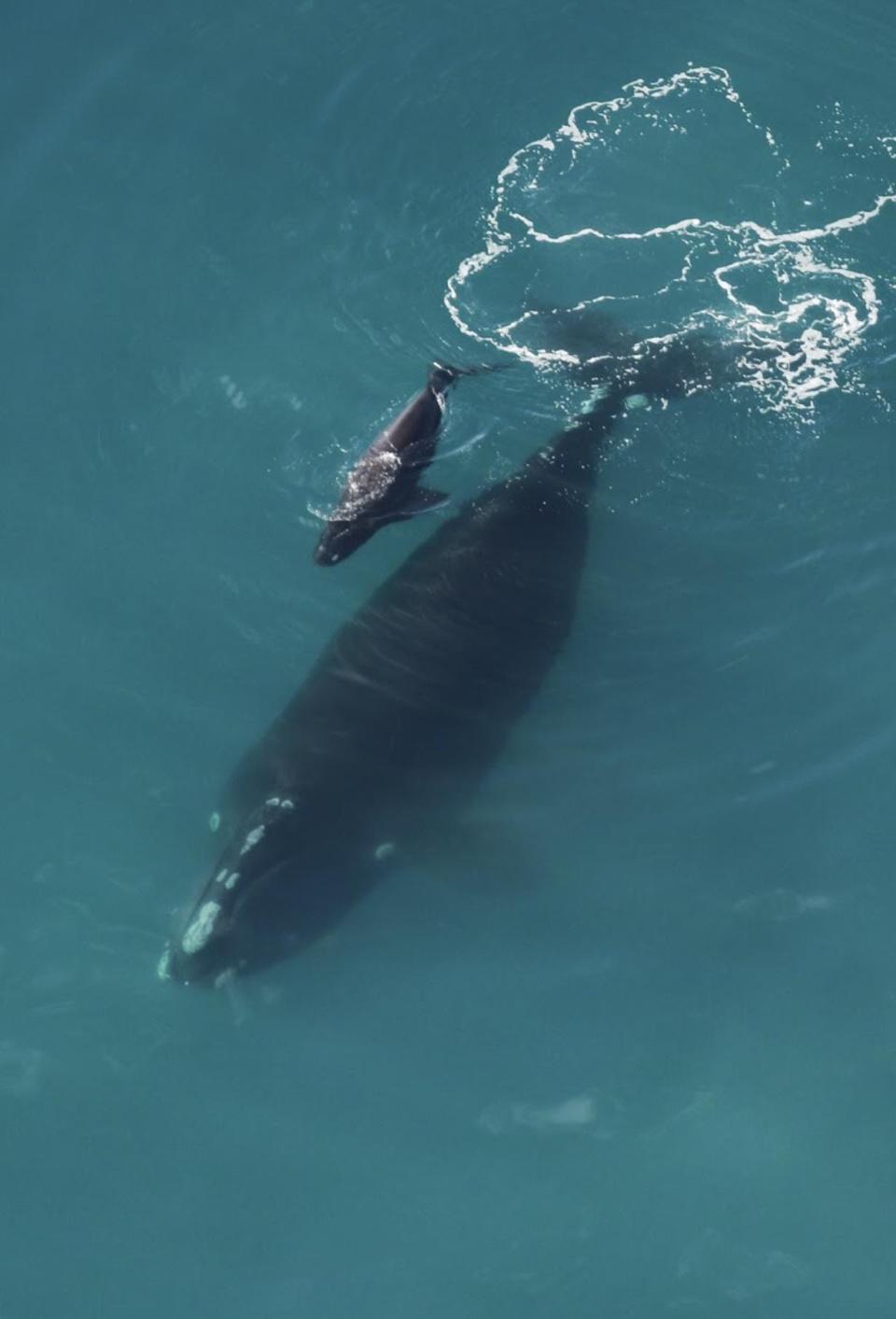A look at threatened or endangered animals here in Georgia. Here's how to help.
As the urban sprawl of Georgia's ever-growing cities continue to cut into more and more rural areas, the impact greatly affects the state's wildlife inhabitants.
A number of native animal species have made the threatened or endangered list due to loss of habitat.
Daniel Sollenberger, senior wildlife biologist with the Wildlife Resources Division at the Georgia Department of Natural Resources, says there’s a difference between threatened and endangered.
“Endangered means that a species is at risk of extinction,” said Sollenberger. “Threatened is a lower level meaning slightly better off than being at risk of extinction.”
Here's a look at four species that are listed as threatened or endangered in the Peach State:

Frosted flatwoods salamander
“They're technically threatened right now due to the loss of their habitat,” said Sollenberger. “They’ve lost a great deal of habitat.
"Fort Stewart is the only place really that you’ll find the frosted flatwoods salamander. There was a lot of widespread deforestation that occurred about 100 years ago. They cut down all the old growth longleaf pines that were in the area and converted that land into farmland.”
The frosted flatwoods salamander needs open stands of Longleaf Pines and a dense grassy understory accompanied with wetlands embedded within the trees, said Sollenberger. They breed in the scattered puddles of water that would fill in with rainwater in winter.

Eastern indigo snake
“(Easter indigo snakes) get their name because in the sunlight. Their scales have an iridescent appearance,” said Sollenberger. “They appear blue or purple colored, but they're actually black."
Growing as long as 8 feet, Sollenberger said they're the longest non-venomous snake in North America. Once spotted across the Southeast, today they're only ever seen in southeast Georgia.
“Most of our native snakes can survive the winter in a stump, hole in the ground, under a piece of cover or in a rock pile," explained Sollenberger. "For indigo snakes, a hole that shallow won't do. It still gets too cold for them. And so they have to find a very, very deep hole to get in. The only animal we have in the Southeast that digs a hole that deep is the gopher tortoise.”
Sollenberger said conservation for the gopher tortoises and the indigo snakes go hand in hand.
“One of the ways to manage indigo snakes involves a lot of prescribed burning,” said Sollenberger. “Prescribed burns remove dead grass, fallen tree branches, dead trees and thick undergrowth. This is done to maintain lots of open grassy or herbaceous understory for the tortoises to forage on; avoiding soil disturbances that would damage burrows.”
Adult gopher tortoises can cohabitate with the indigo snake just fine. However, when the tortoise eggs hatch the snake will try to eat them.
“Lots of things actually live in tortoise burrows,” said Sollenberger. “There are about 300 different animal species that have been documented using tortoise burrows, including burrows that still have a tortoise in them.”

Loggerhead Sea Turtle
"There are two main things impacting (Loggerhead sea turtles). One is nesting areas on beaches being lost to development," said Sollenberger. "We're fortunate in Georgia that we have a lot of undeveloped beaches."
Also, invasive predators like feral hogs have developed a taste for sea turtle nests, said Sollenberger.
Another cause for the Loggerhead decline was due to turtles getting caught in fishing gear such as trawls, longlines and gillnets.
“They have these big nets dragging behind the boats and the turtles would get caught in them and drown,” said Sollenberger. That was killing a lot of adult female turtles.
"Sometimes these turtles can take three decades before they’re old enough to reproduce. If you lose one adult female that's a big blow to the population.”
Shrimp trawlers are now required to install a Turtle Excluder Device (TED) in an effort to reduce catching sea turtles. These devices are made of metal bars and mesh that fit inside the neck of a trawl net. While shrimp pass between the bars to the back of the net, larger animals bump against the metal grid and escape through a flap in the mesh, according to the National Oceanic and Atmospheric Administration.

North Atlantic Right Whale
Matt Elliott, chief of Wildlife Conservation with the Wildlife Resources Division, said right whales were hunted for their high blubber content, which landed them on the endangered species list.
“The North Atlantic Right Whale is definitely endangered and is one of the more endangered species that we have,” said Elliott. The whales' population is down to about 350.
Today, though, they're getting entangled in commercial fishing gear, especially in the Northeast, and sometimes collide with ships, said Elliott. Those entanglements, coupled with a slow reproductive rate, has contributed to the whales' potential demise.
“They are here in Georgia during the winter months,” said Elliott. The females migrate south right off the Georgia coast to birth their young. Once the weather warms up, they move up to New England and Canada."
In case you missed it: Augusta gardening experts say native gardening benefits the gardener and wildlife
And: 'You see a lot of miracles': Hope for Hooves provides hands-on animal education, therapy
How to help
“If you're a landowner, and you have some acreage, doing things like prescribed burns on your property, to promote habitat for a lot of these animals would help greatly,” said Sollenberger. “... For people that don’t have a lot of land, you can plant a small, native pollinator garden. It can provide habitat and food for butterflies.”
For more information about endangered species or how to help, visit the Georgia Department of National Resources Wildlife Resources Division website georgiawildlife.com.
This reporting content is supported by a partnership with several funders and Journalism Funding Funding Partners.
Erica Van Buren is the climate change reporter for The Augusta Chronicle, part of the USA TODAY Network. Connect with her at EVanBuren@gannett.com or on Twitter: @EricaVanBuren32.
This article originally appeared on Augusta Chronicle: Wildlife on the threatened or endangered species list can be saved

